Note: Recently I became aware of a technical glitz that was causing problems with the delivery of this blog. It has now been resolved. To those of you reading a blog post for the first time, even if you subscribed many months ago — my apologies for the delay and welcome to the Site and Insight blog! I welcome your comments.
“It is magnificent. It is what God would have done if he had the money.”
I don’t know whose garden Noel Coward was describing when he penned those words, but you can bet that the garden was in England.
Magnificent gardens are a commonplace there, so numerous that even someone like me who loves visiting gardens can tire of them. So many pretty flowers, such neat borders, all so perfectly edged. So many grand vistas, so many stone terraces, so monotonously predictable.
Would Ascott be a garden of this sort? It has been a National Trust property since 1947, and in almost 70 years a lot can happen to a garden, good and bad. But a Rothschild still lives at Ascott, in a house that dates back to the early 1600s and the reign of James I. Knowing that the garden had been created by several generations of the Rothschild family, I expected that money would not be an issue. But would money translate into godly magnificence?
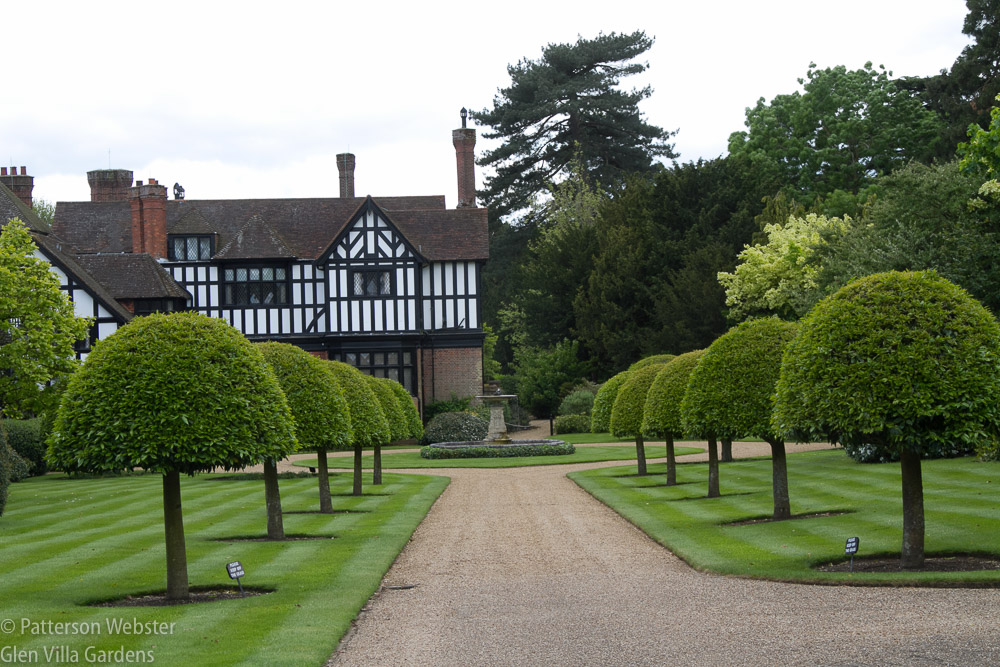
Formally clipped Portuguese laurels line a perfectly edged walkway in front of Ascott house. Over the years the house has been added to and modified to create the Tudor-style façade you see here.
The gardens at Ascott were laid out by the eminent horticulturalist Sir Harry Veitch around 1902 for Leopold de Rothschild, who gave the gardens as a wedding present to his wife. Suitably, a sundial sends a loving message in tightly clipped yew: “Light and shade by turn, but love always”.
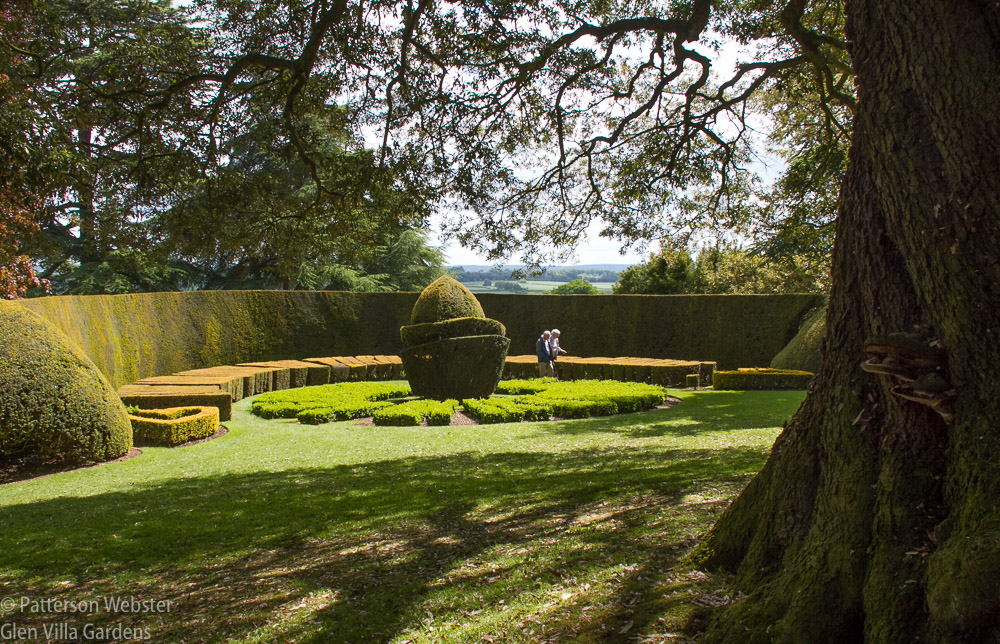
The sundial is made of golden and darker Irish yew and dwarf golden boxwood. The hours are shown in Roman numerals. A heart appears at either end of the text which is written in block letters.
Many aspects of the garden are what you’d expect to find in a grand English garden built in this period — stone terraces à la Gertrude Jekyll, sweeping lawns, flowering shrubs. Along with splendid old trees, clipped hedges and topiary dominate the property. One hedge rises in impressive layers to form a barrier in tones of green.
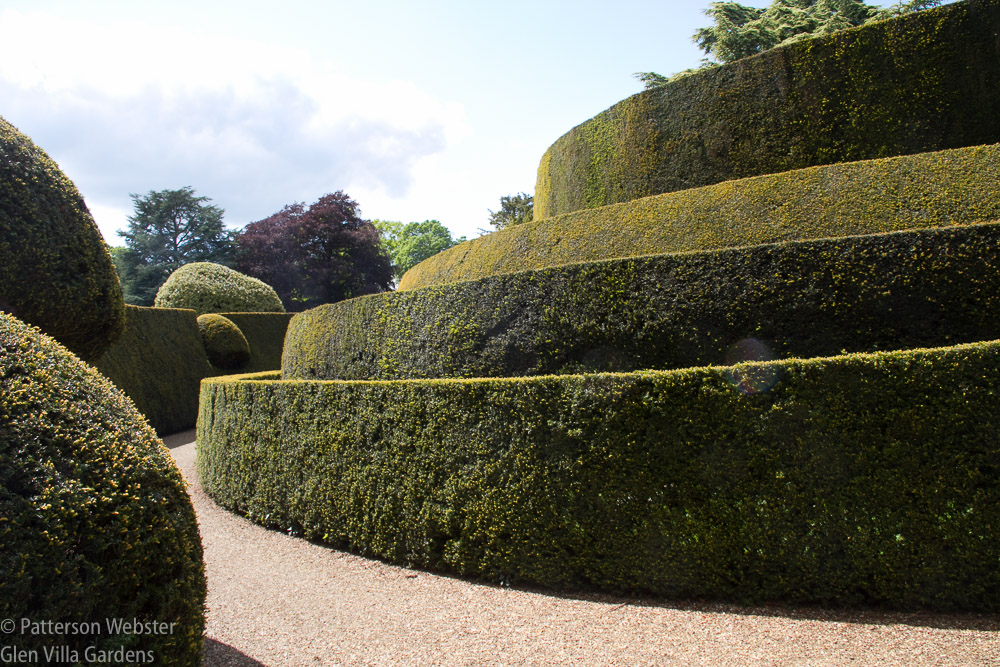
Standing beside this towering hedge felt like being next to the prow of an enormous ocean liner. The Titanic, perhaps?
There is, of course, the obligatory long herbaceous border. Here it is called The Madeira Walk although I don’t know why. It was predictably attractive when I saw it in late May although it failed to elicit the excitement I normally feel when seeing flowers massed in abundance.
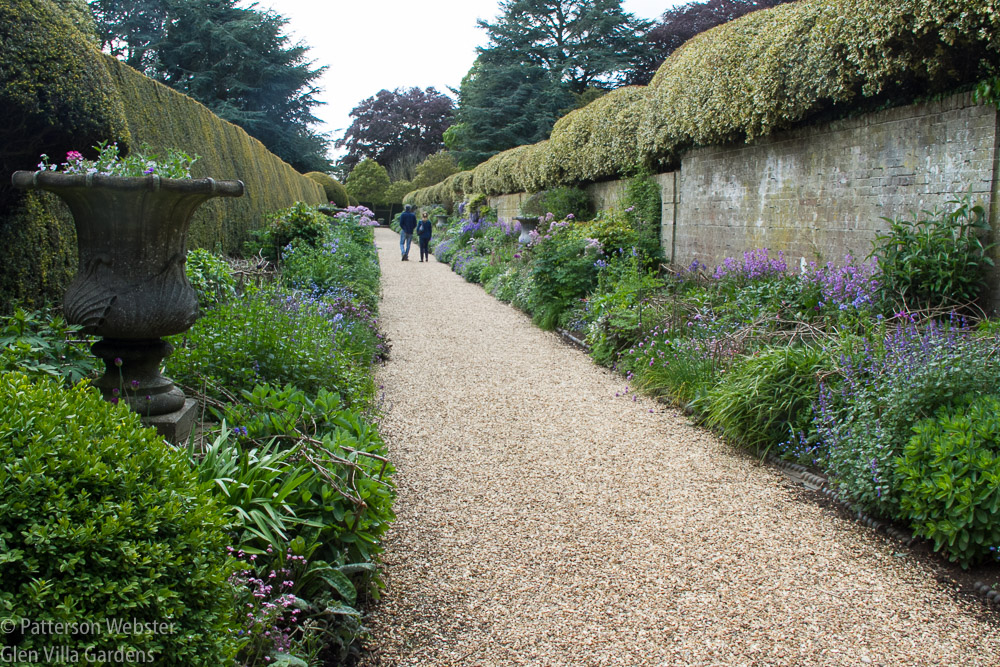
The tones along the Madeira Walk were muted on the day I visited. Perhaps on other days or later in the season they would be more exciting.
Oddly, the feature that did excite me had nothing to do with flowers. (In fact, the planting in this circular garden room was less than stellar.) Instead it was a large bronze statue of Venus, by the American sculptor Thomas Waldo Story.
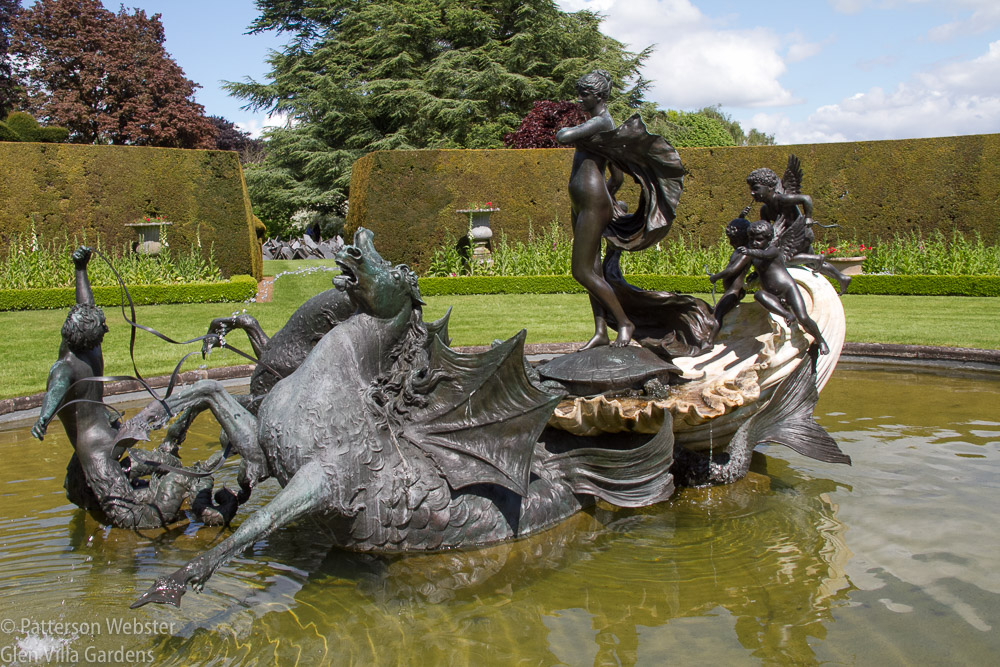
Winged horses pulling a sea shell chariot, with cupids holding the reins: what more could anyone ask for in a statue of this ilk?
Readers who know my taste in art may find this surprising. I was surprised myself. Normally I would barely glance at a statue of a scantily clad woman attended by cherubs, or else I would look at it and make a facetious comment or two. But the fine workmanship and the over-the-top, no-holds-barred exuberance of this statue stopped me in my tracks.
As did other aspects of the garden. I loved the elephant tromping along the side of a hedge.
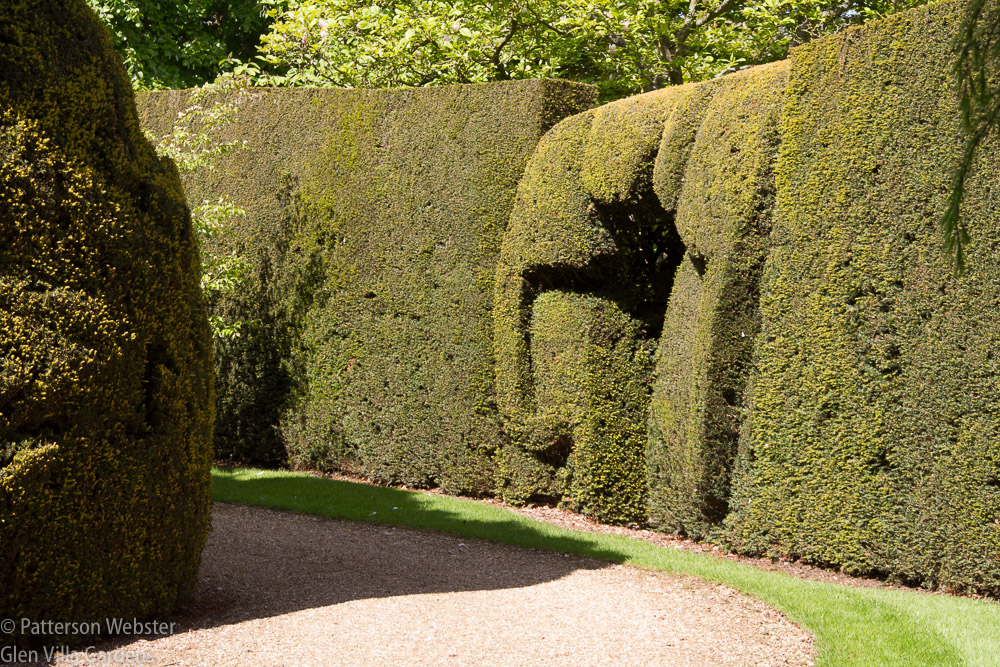
Visitors could easily miss seeing this elephant. But what a shame if they did.
I loved the square window cut into the barrier hedge, and the tiny dome that perched there, a miniature version of the larger dome in the foreground.

Straight edges are essential for this kind of formality to work.
I loved the tippy topiary in the Dutch garden …
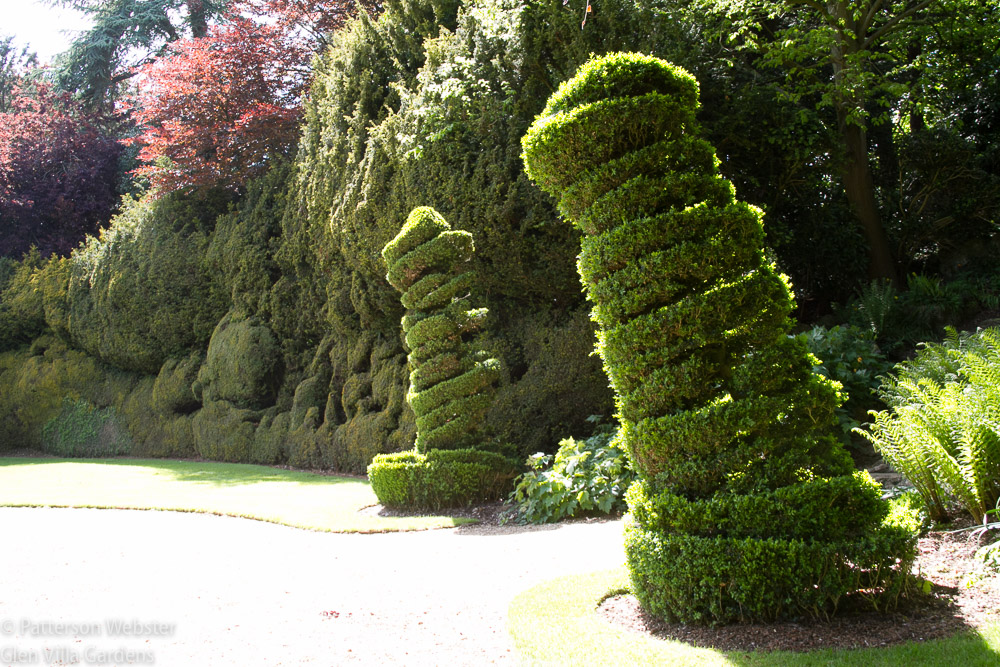
Stacked towers tip to the sun near another statue by Thomas Waldo Story.
… and the embracing trees that threatened to form a heart in mid-air.
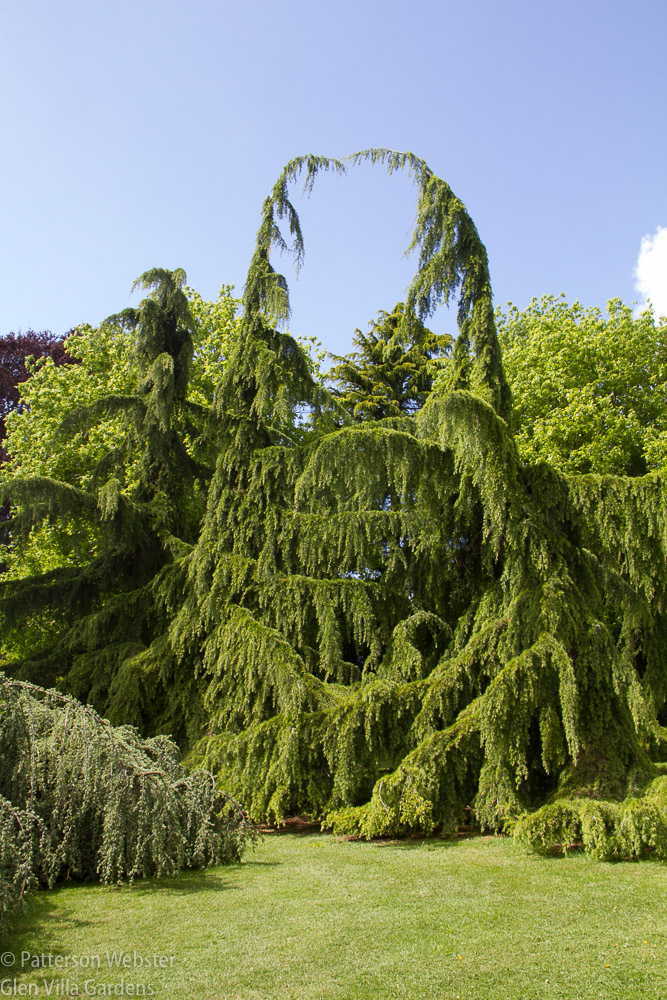
Seeing these enormous trees reminded me of the topiary creations of the American gardener Pearl Fryar. I wrote about his garden here.
I was less excited by the slate sculpture by Richard Long.
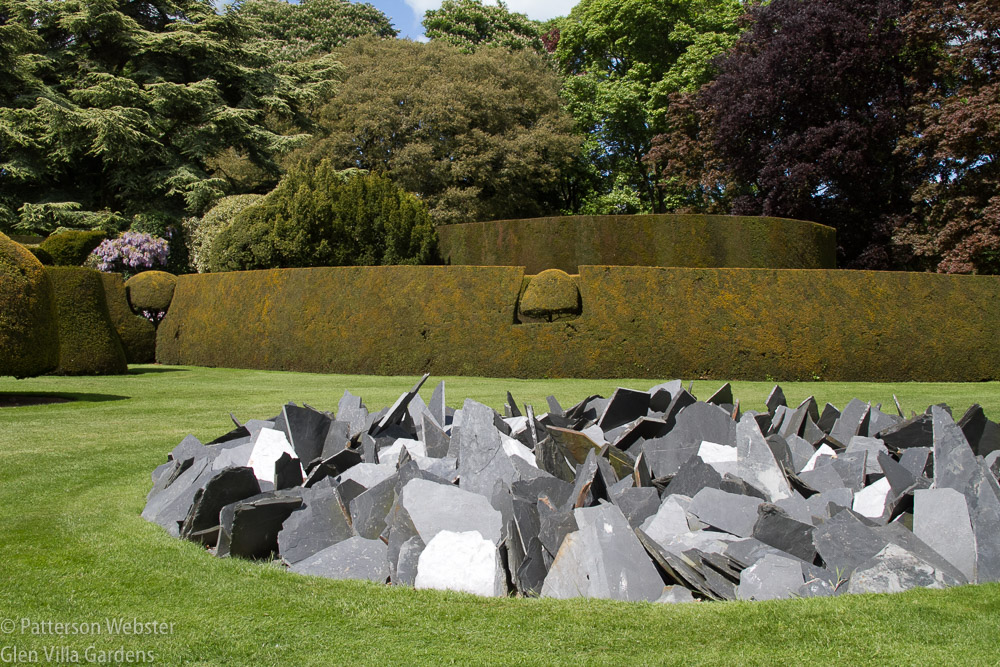
The Ascott Circle, by Richard Long: another echoing form
The Ascott Circle is located in an section of the garden that is full of circles, between the hedges that surround the Venus statue, the clipped yew sundial and the Titanic barrier hedge. A metal plate set flush with the ground both identifies the artist and helps a viewer understand his intent.
A circle is real and symbolic.
A stone is real and symbolic.
Raw material: the land is made of stone or parts thereof.
Cosmic variety: every stone is different like fingerprints or snowflakes.
A circle of stones: from simplicity to complexity.
I like contemporary art, provocative art, art that appeals to the mind as well as the eye. I admire Richard Long and the land-based art he created over many years. Yet as much as I wanted to admire this particular circle of stones, I couldn’t. It felt out of place and heavily jarring in the setting.
I read the text several times and tried to keep it in mind as I searched for a connection between the artwork and the site. I was hoping for something specific rather than cosmic. Yes, the shape echoed other circular forms nearby, but that seemed a trivial connection and I could find no other.
Not so at the newest addition to the garden. The Lynn Garden, designed by the Belgian father and son team of Jacques and Peter Wirtz, celebrates the marriage of Sir Evelyn de Rothschild to Lynn Forester. As such, it immediately recalls the marriage a century earlier that is commemorated in the topiary sundial and establishes a sense of a continuing timeline and repeating events.
The garden is set on the north side of the house and is approached via a path bordered by undulating beech hedges that cast rollicking shadows on the lawn.
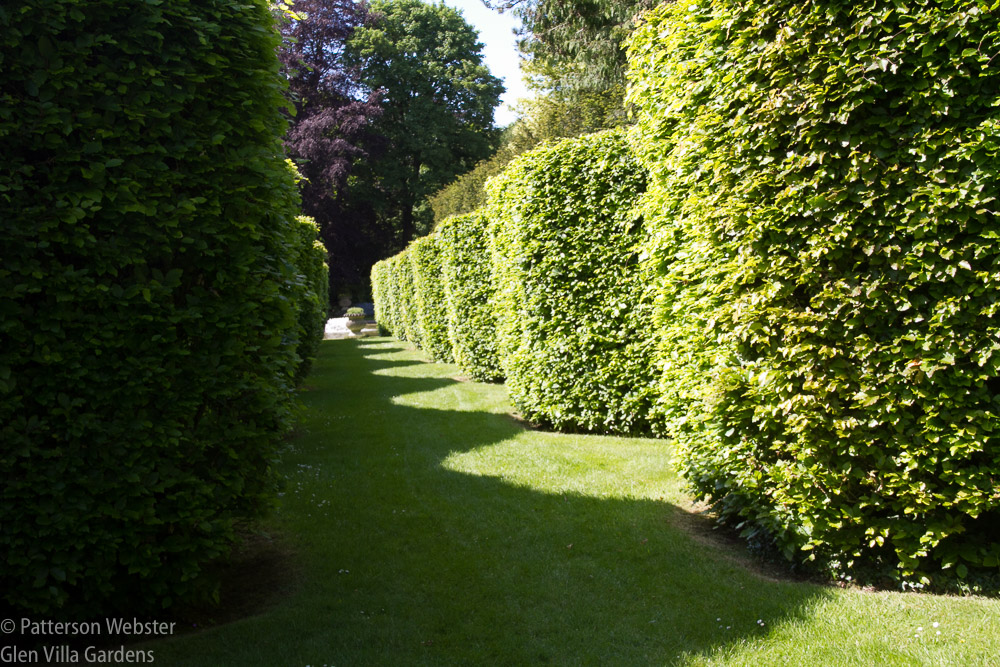
Shadows emphasize the aptly named Serpentine Walk.
Entering the Lynn Garden, I saw an earthen mound surrounded by sweeps of ornamental grasses. More mounds appeared to the left and right, and circles encircling other circles, of water, hedges and trees.
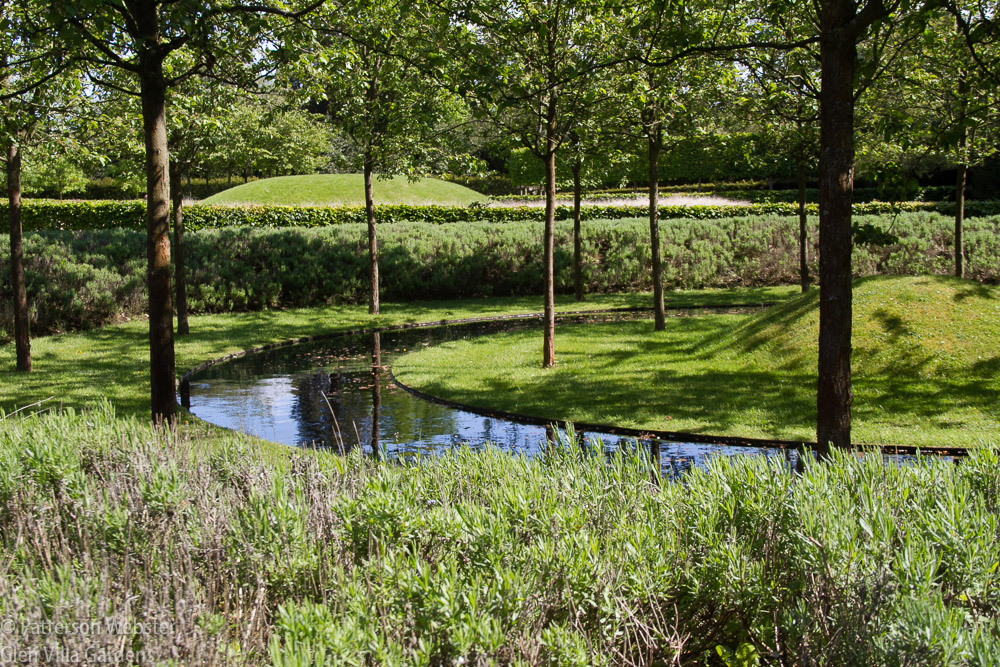
A sweep of water, a circle of boxwood and ornamental grasses… simple forms leading to complex thoughts.
Following a curving line of ornamental grass, I was mildly irritated to discover that I had to retrace my steps, but this retracing meant I saw the space again, from the opposite direction. Unlike many gardens where doing this reveals something unexpected, here there were no new views, no revelations. Rather there was a sense that I was going backwards in time as well as space. The mounds and ditches were unlike other parts of the garden yet they seemed to fit, as if in some more significant way they had grown out of the site itself.
It was only later, when I began to research the area, that I discovered that the nearby Chiltern Hills are dense with Iron Age hill forts. These large enclosures surrounded by circular ditches and banks were not always built on hills nor were they necessarily built for defence. They had a range of uses, as homes for communities, places of trade or sites for tribal ceremonies — like marriages perhaps. Reading the brief descriptions of Cholesbury Camp and Ivinghoe Beacon on the Chilterns website, I was struck by subtle connections between those ancient earthworks and the contemporary garden. The distinctive clumps of trees on Ivinghoe Beacon’s bare hilltop seemed linked to the trees on the Lynn Garden’s mounds, and the unobtrusive location of Cholesbury as a place of refuge in times of trouble seemed mirrored by the almost secret location of the Lynn Garden itself.

Ornamental grasses, trees and water combine to form the Lynn Garden.
Whether these connections exist or arise only from my imagination is less important than the overall sense of satisfaction I derived from the Lynn Garden. This contemporary addition lifted a fine, if not extraordinary, English garden from one level to the next. Through its use of sculptural landform, water and topiary, it added a sense of sophistication and continuity that drew together disparate parts of the garden into a continuum. Individual jewels become linked into a single horticultural necklace.
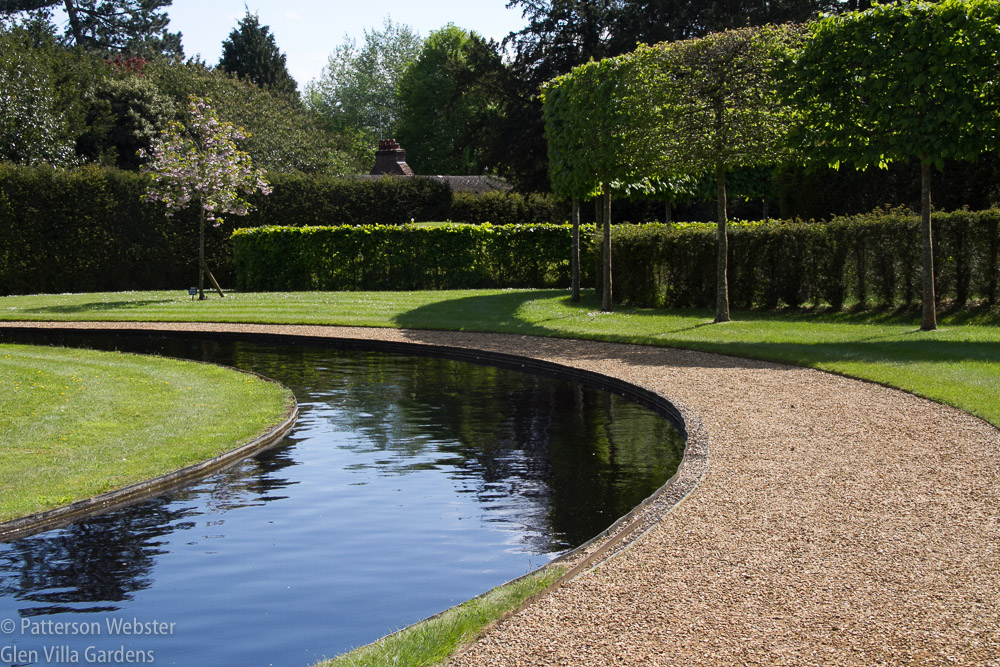
Shadows of clipped trees add another curve to those of the circular pool, walkway and island mound.
Is Ascott magnificent? Flowers were not at their peak when I visited but the views over the Chiltern hills were as splendid as anyone could wish, And whose doing was that?
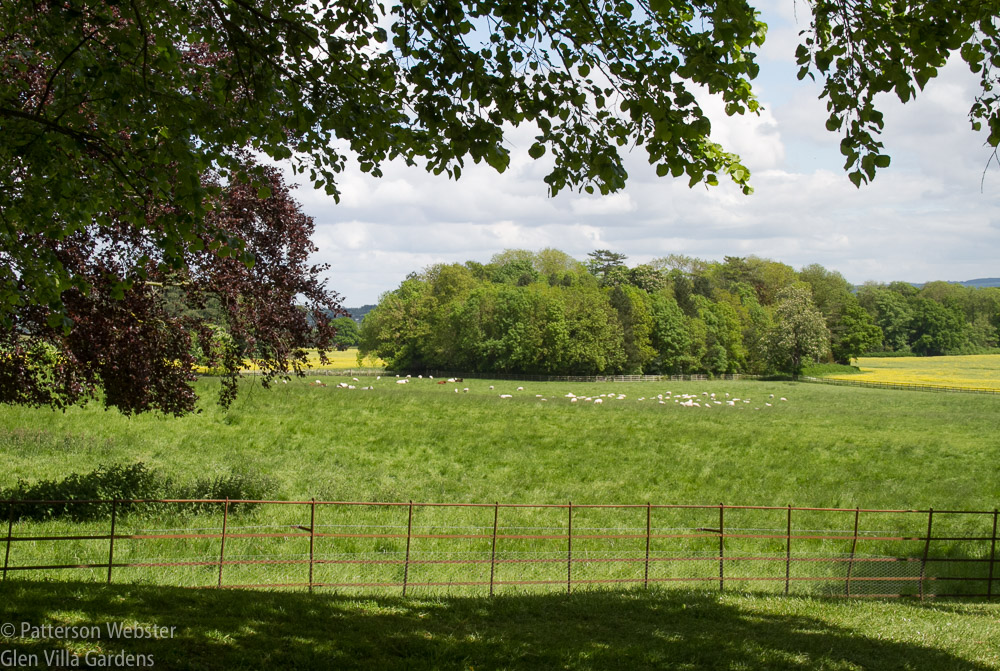
Sheep grazing, a leafy copse, yellow fields and a blue-grey sky: as lovely a creation as you could hope to find.






You’re right (I think, from a picture!) that statue has great life and movement. And I think Jacques and Peter Wirtz are really exciting: which is one reason why I was very disappointed by Alnwick. It seems this garden tells us that flowers are not everything and that imagination and thought are a great contribution to bring to a garden. Xxx
I haven’t visited Alnwick and this is the first work of Jacques and Peter Wirtz I’ve seen in the flesh (as it were) rather than in photos. Greedy as I am, I now want to see more.
Didn’t miss the flowers on the one….loved the sculpturing!
So did I, Robert.
Anybody know what this is?


I love the elephant and other topiary whimsy. Otherwise, this garden would not make my list of favorites.
I’m told the Dutch garden is truly something special in the spring and that the Madeira Walk is outstanding. It was designed by Arabella Lennox-Boyd whose flower combinations I admire. It simply wasn’t at its best when I was there. Or else I wasn’t paying enough attention. (Maybe I was thinking about work and putting seeds in the wrong spots?)
I enjoyed your critique of a garden I thought I did not like, perhaps because I agreed with what you were saying. I’ve always admired the Wirtz magic, so the Lynn Garden saved the day. The iron age historical background also adds interest. I’d love to know of the Wirtz’s considered that in their design.
I would also very much like to know if the Wirtz’s were aware of this iron age forts. I think they must have been, but that is only speculation.
The Lynn Garden was certainly secretly located from me. In fact, despite spending a good two to three hours here in August, I barely recognise any of your photos. It definitely requires a trip back next year, perhaps in the spring to appreciate the Dutch garden but possibly sans hide-and-seek distracting nephews! I will appreciate it all the better for your article (particularly love your Titanic association); it didn’t strike me as one of the great English gardens last time, but I really did miss so much.
I agree that it isn’t one of the great English gardens but I know that for people living in the vicinity, it is a wonderful place to spend time. I spoke to several people who go as often as they can. For them, the seasonal changes keep the garden fresh and interesting. So despite its not being one of my favourites, I’d happily visit Ascott again.